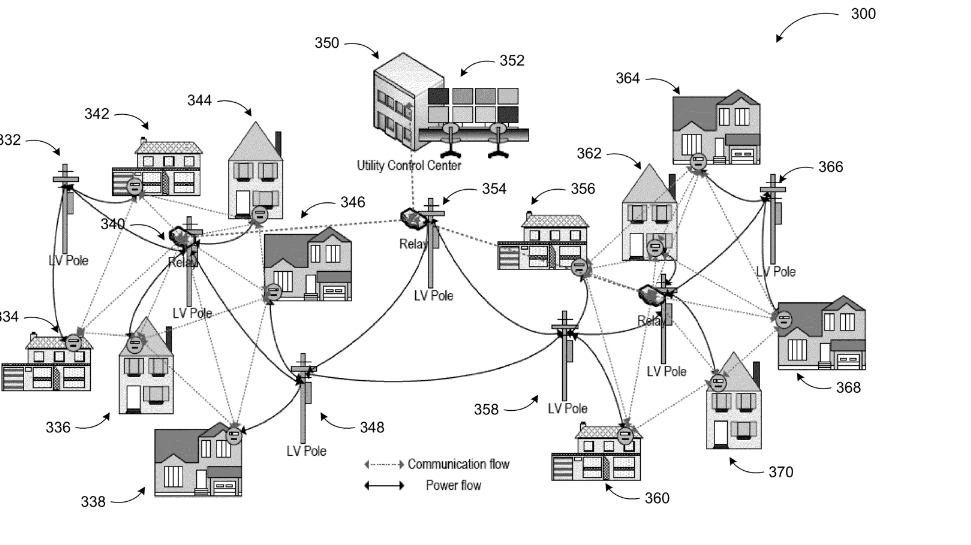Weather-dependent renewable energy sources, mainly solar panels, can be made small enough that consumers have the ability to harness energy without massive production plants. Most people cannot store a hydroelectric dam or a natural gas burning power plant on their property, but many have solar panels. Users harnessing their own power creates the possibility of energy generation. Power generation no longer needs to be relegated to massive power plants. Through the use of solar panels, power generation can occur at the same place that the power is consumed. As energy generation becomes distributed and focused on renewables, utility companies lose exact control over energy generation. Without this control, utility companies may be unable to address shortages and congestion properly, leading to problems for consumers. Dr. Nirwan Ansari and Dr. Chun-Hao “Thomas” Lo developed a communications system between utility customers and their utility providers in order to control which households and businesses are contributing surplus energy into the grid to address the problem of solar energy congestion.
Ansari is a distinguished professor with the Department of Electrical and Computer Engineering, at the New Jersey Institute of Technology, and Lo worked as a research assistant at the university while completing his PhD in Electrical Engineering. A highly productive scholar, Ansari has been attributed in nearly 700 Google Scholar publications. During his time at NJIT, Lo won a graduate student award for research relating to this patent, US 9,246,334, “Alleviating Solar Energy Congestion in the Distribution Grid via Smart Metering Communications.”
Different sources of electricity have emerged and developed over the past century, but our grid infrastructure has stayed largely the same. The electric grid in the United States is centralized around huge power plants that generate the vast majority of the electricity used in the country. Electricity is then transported from the power plant to households and businesses that rely on power for daily functions. When the demand for electricity by consumers rises or falls, utility companies use estimates to increase or decrease the productivity of power plants to meet demand. Because the existing power plants primarily utilize fossil fuels to provide energy, the patterns of usage are predictable, and therefore easily controlled. However, due to the growing implementation of solar power by consumers, utility companies have experienced increasing uncertainty regarding the necessary power productions. The power companies have lost the ability to tailor supply to demand. Solar energy is heavily dependent on dynamic weather changes and the time of day. If energy needs suddenly increase overnight, utility companies are unable to rely on power being distributed to the grid from solar energy. To minimize the risk of blackouts and other shortages of energy, utility companies have traditionally relied on easily controlled sources of energy, including coal, natural gas, and hydroelectric power plants. In the past, when utility companies experienced rapid changes in demand for energy, the utility companies quickly responded to the power need by either increasing or decreasing the rate of production.

A growing problem regarding solar panels is solar energy congestion. Increasing solar energy congestion can be directly correlated with the rise in solar panel users. While smart meters help track the expenditure of electricity more efficiently, these devices are unable to intelligently communicate with the utility companies in order to remove users producing sufficient energy from the grid. Utilizing this patent’s invention, smart meter communications would drastically reduce the data computation time and corresponding network traffic. A reduction in network traffic and data computation time is a reduction in energy costs.
The smart meter communication first determines how much energy a “unit” or house uses over an interval of time. Then, during peak periods of energy congestion, when many units are producing energy via solar panels, the smart meter communication is able to disconnect itself from the grid. The unit is disconnected from the grid when the smart meter detects a surplus of energy being produced by the unit. The smart meter communicates with the UCC in order to disconnect each unit. Once the disconnection occurs, the unit becomes self-sufficient, and solely uses energy produced by its solar panels. Electricity from the grid is then sent only to units that need it.
The use of smart meter communications will become increasingly relevant as more consumers utilize solar panels. Presently, this patent has been cited by four more recent patents, all granted to researchers at AT&T other inventors, concerning various aspects of network communications.
Why Is US Patent Number 9,246,334 a patent?
1. Patentable Subject Matter:
This patent is categorized as a process. It provides a method for already existing smart meters—power meters that send continual data to power companies regarding individual energy by utilizing radiofrequency waves, the same waves mobile phones use—to communicate more efficiently with the Utility Connection Center (UCC), and to stop transmitting data during high energy saturation periods during which users are harnessing their own energy.
2. Utility (Usefulness):
As renewable energy becomes a growing sector of the power field, companies are going to deal increasingly with the issue of over-saturation of the grid during daylight hours. This patent provides a method of solving a growing problem.
3. Novelty:
While the smart grid is a growing technology, no other inventors have proposed limiting the communications between smart meters located in the homes of users harnessing solar and the UCC during prime solar periods in order to prevent energy congestion.
4. Non-Obviousness:
A primary selling-point of smart meters for power companies is that the meters are capable of tracking exact energy usage of consumers. Therefore, it is almost outlandish to think that the solution to the problem of congestion may involve disconnecting the smart meters from communicating with the UCC for periods of time.
5. Enablement:
The creation of the system is clearly outlined in the patent, and someone with a background in the relevant field would be able to eventually recreate this technology.
By Hope Welch, Timothy Bott, Joseph Macfarlane
